|
|
Release Notes
Selection: Glen Elgin single malt from Speyside, unpeated, fresh fruits, sweet cereal with a hint of ginger. Bourbon hogshead from an Islay distillery, sweet smoke and sea spray with a gentle fruitiness.
Result: This courageous cask craft of oak and spirit develops a style of Glen Elgin like no other; a character of mellow bonfire embers, zesty lemon and honey with a deliciously long and satisfying finish.
Result: This courageous cask craft of oak and spirit develops a style of Glen Elgin like no other; a character of mellow bonfire embers, zesty lemon and honey with a deliciously long and satisfying finish.
From the Bottle
The Bottler: Murray McDavid
| Established: 1996 |
| Silent since: False |
| Address: 56 Walton Street Knightsbridge London SW3 1RB England, UK |
| → website |
The range is intentionally small, less than 10 bottlings at a time, selected from distilleries which produce great whiskies, rather than simply distilleries having a well known name.
The "Mission Gold" Range is a collection of some of the oldest and rarer casks in Murray McDavid cellars , chosen for their out standing quality and uniqueness.
Some of these whiskies are selected for further refinement with a period of Additional Cask Evolution (ACE"d) on Islay in European Oak wine casks such as Chateau Lafite, Chateau Margaux, Chateau d"Yquem,
All bottlings are with Islay Spring water, bottled at the Bruichladdich distillery. they never add any colouring, nor do they chill filter
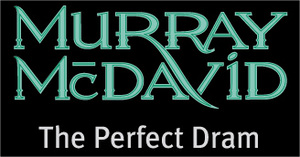
The company is named after Mark Reynier"s grand parents, Harriet Murray and Jock McDavid, Unlike other Independent bottlers, Murray McDavid hasn"t a blenders tradition to follow, bottling only single malts instead of blends.
With Mark Reynier, third generation wine merchant, Murray McDavid has taken several aspects from the wine industry in the preparation of their bottlings, for example always tasting each individual cask, then creating a collection of several casks from the same distillation to create consistency and maximise complexity. Gordon Wright was the only one of the founders with experience in the whisky world.
Mark Reynier, Simon Coughlin and Gordon Wright founded Murray McDavid in 1996.
Murray McDavid became a major investor in Bruichladdich distillery on Islay around 2000 when they purchased the distillery from JBB/Whyte & Mackay via a consortium of 25 different shareholders that operated under the name "Bruichladdich Distillery Co. Ltd.".
In 2013 Murray McDavid was acquired by Scotch services company Aceo Ltd.
In 2013 Murray McDavid was acquired by Scotch services company Aceo Ltd.
from Malt Madness, Murray-McDavid.com, The Interwebs
The Distillery: Glen Elgin
| Established: 1898 |
| Silent since: False |
| Address: Elgin |
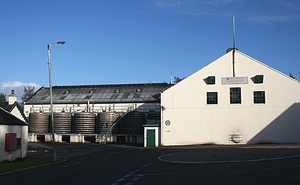
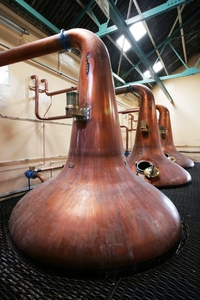
The Glen Elgin distillery was built between 1898 and 1900 by a partnership of William Simpson & James Carle. That seems like a long time, but it was after the 'Pattison Crash'. Production at Glen Elgin started officially on May 1, 1900. The architect Charles Doig predicted that no other distillery would be built in Speyside for at least 50 years and he was right; Tormore wasn't built until 1958.
May 1, 1900 was not one of the most blessed of days, apparently. The distillery was sold to Glen Elgin-Glenlivet Distillery Co Ltd. in 1901, opened in 1902 but then failed again just five months later. In 1907 Glen Elgin was acquired by one John J. Balanche, a whisky merchant from Glasgow.
From there on, things moved more smoothly for Glen Elgin. Apart from a few changes in ownership little 'constructive' happened until 1964 when Glen Elgin was rebuilt and the number of stills was extended from two to six. UDV's (i.e. Diageo's) 'sister' distillery Glendullan in the Dufftown region of Speyside underwent a similar massive refurbishment less than a decade later.
When Glen Elgin distillery was expanded, it was licensed to White Horse Distillers Ltd. in Glasgow. I'll get back to White Horse in a moment, but I have to pay some more attention to the stills first. The current distillery configuration at Glen Elgin is quite unusual; they have four wash stills and three spirit stills (all relaively small in size as well).
That makes Glen Elgin an exception to the rule; in almost all other cases (well, in Scotland at least) 'pairs' of stills seem to be more customary. I'm not entirely sure when they added the seventh still though - after the rebuilding of 1964 they still had six stills, at least if my information is correct. In any case, the change probably occurred while Glen Elgin was licensed to White Horse Distillers - now a part of Diageo.
White Horse is a legendary name in the Scotch whisky industry - and as you can see from the picture of the left they still displayed the 'White Horse' name prominently on the label of their standard bottling during the 1990's.
Although the White Horse name is less dominant on the labels of the new official bottles, the logo still adorns the Glen Elgin distillery buildings. The name of the 'White Horse' brand originated in the Canongate district of Edinburgh. That was where the White Horse Cellar Inn could be found; a historical landmark that got its name from the white horse that used to belong to Mary, Queen of Scots.
The White Horse Cellar Inn was located near the beginning of the stagecoach route between Edinburgh and London. This journey used to take eight days - provided conditions were favourable.
Next to the White Horse Cellar Inn was the ancestral home of Peter Mackie, who would later inherit the Lagavulin distillery on Islay. Until a few years ago the name 'White Horse' was displayed on the boxes and labels of the 16 years old Lagavulin expression.
Anyway, I'm getting side-tracked; the topic at hand was Glen Elgin. If my information is correct Diageo issued a semi-official 'Fauna & Flora' bottling in 2001; in-between the 'White Horse' release of the 1990's and the more recent bottle with the brown box depicted above. This is fairly unusual because these F&F bottles were usually reserved for distilleries that didn't release proper official bottles, like Caol Ila or Royal Brackla.
In The New Millenium
May 1, 1900 was not one of the most blessed of days, apparently. The distillery was sold to Glen Elgin-Glenlivet Distillery Co Ltd. in 1901, opened in 1902 but then failed again just five months later. In 1907 Glen Elgin was acquired by one John J. Balanche, a whisky merchant from Glasgow.
From there on, things moved more smoothly for Glen Elgin. Apart from a few changes in ownership little 'constructive' happened until 1964 when Glen Elgin was rebuilt and the number of stills was extended from two to six. UDV's (i.e. Diageo's) 'sister' distillery Glendullan in the Dufftown region of Speyside underwent a similar massive refurbishment less than a decade later.
When Glen Elgin distillery was expanded, it was licensed to White Horse Distillers Ltd. in Glasgow. I'll get back to White Horse in a moment, but I have to pay some more attention to the stills first. The current distillery configuration at Glen Elgin is quite unusual; they have four wash stills and three spirit stills (all relaively small in size as well).
That makes Glen Elgin an exception to the rule; in almost all other cases (well, in Scotland at least) 'pairs' of stills seem to be more customary. I'm not entirely sure when they added the seventh still though - after the rebuilding of 1964 they still had six stills, at least if my information is correct. In any case, the change probably occurred while Glen Elgin was licensed to White Horse Distillers - now a part of Diageo.
White Horse is a legendary name in the Scotch whisky industry - and as you can see from the picture of the left they still displayed the 'White Horse' name prominently on the label of their standard bottling during the 1990's.
Although the White Horse name is less dominant on the labels of the new official bottles, the logo still adorns the Glen Elgin distillery buildings. The name of the 'White Horse' brand originated in the Canongate district of Edinburgh. That was where the White Horse Cellar Inn could be found; a historical landmark that got its name from the white horse that used to belong to Mary, Queen of Scots.
The White Horse Cellar Inn was located near the beginning of the stagecoach route between Edinburgh and London. This journey used to take eight days - provided conditions were favourable.
Next to the White Horse Cellar Inn was the ancestral home of Peter Mackie, who would later inherit the Lagavulin distillery on Islay. Until a few years ago the name 'White Horse' was displayed on the boxes and labels of the 16 years old Lagavulin expression.
Anyway, I'm getting side-tracked; the topic at hand was Glen Elgin. If my information is correct Diageo issued a semi-official 'Fauna & Flora' bottling in 2001; in-between the 'White Horse' release of the 1990's and the more recent bottle with the brown box depicted above. This is fairly unusual because these F&F bottles were usually reserved for distilleries that didn't release proper official bottles, like Caol Ila or Royal Brackla.
In The New Millenium
- 2001 - Glen Elgin (briefly) becomes part of the 'Flora & Fauna' range with a 12yo expression.
- 2002 - The expression of Glen Elgin malt whisky in the 'F&F' range is replaced by a 12yo 'Hidden Malt'.
- 2005 - Glen Elgin is added to the 'Classic Malts' range of Diageo. This range used to contain only six different single malts - Cragganmore, Dalwinnie, Glenkinchie, Lagavulin, Oban & Talisker - when it was introduced in the late 1980's, but in 2005 a bunch of other single malts suddenly became classic, including Caol Ila, Cardhu and Clynelish.
Trivia:
- The Glen Elgin malt whisky distillery was built in 1898 and 1900 by a partnership of James Carle and William Simpson - who was a former manager at the relatively nearby Glenfarclas distillery. One of the main reasons for the choice of the location was a local water source. Unfortunately, that source turned out to be unreliable. This presented the owners with a problem; waterworks were not available at the time in the more remote parts of Scotland, but a whisky distillery needs a constant supply of water for its operations.
- Another problem for the Glen Elgin distillery was the fact that a planned branch of the railroad was never actually constructed. By the end of the Victorian era railways had become very important for the transportation of both raw materials and whisky. In fact, access to the railroad system had grown so important that the Balblair distillery was demolished in 1872, only to be rebuilt brick by brick half a mile down the road where it could benefit from the nearby railway. When the planned branch of the railway didn't materialise, the founders of Glen Elgin had a problem; machinery and lamps had to run on paraffin until the middle of the 20th century. Glen Elgin distillery had one employee who's sole job was keeping all the lights lit - remarkably inefficient of course...
- The founders had invested 13,000 pounds in the construction of the Glen Elgin distillery, but when they had to sell it a few months later they managed to retrieve only 4,000 pounds of their original investment.
- The Glen Elgin malt whisky is still an important component of the 'White Horse' blended whiskies, which are sold in more than 200 different countries. Mind you, the same is true of the Johnnie Walker blends.
- The pot stills which are currently in use at the Glen Elgin distillery were installed in 1992.
from Malt Madness
The Owner: Diageo
| Established: 1997 |
| Silent since: False |
| Address: 8 Henrietta Place, London, W1G ONB, UK |
| → website |
Diageo also distributes Unicum, its lighter-bodied variant Zwack and Jose Cuervo tequila products in North America. However, Cuervo operates as a separate company in Mexico and is not owned by Diageo. Similarly Grand Marnier is distributed by Diageo in many markets, including exclusively in Canada, and a deal was reached in 2009 to significantly expand this partnership in Europe.
Furthermore, Diageo owns the Gleneagles Hotel.
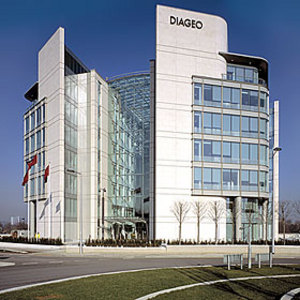
Diageo was formed in 1997 from the merger of Guinness plc and Grand Metropolitan plc. The creation was driven by the two executives Anthony Greener and Philip Yea at Guinness plus George Bull and John McGrath of Grand Metropolitan. The product portfolios of Guinness and Grand Met were largely complementary with little overlap.
Diageo is the world"s biggest whisky producer with 28 malt distilleries and two grain distilleries.The company operates the Scotch whisky distilleries of Auchroisk, Benrinnes, Blair Athol (situated at Pitlochry), Caol Ila, Cardhu, Knockando, Glen Elgin, Clynelish, Cragganmore, Dalwhinnie, Glenkinchie, Glen Ord, Lagavulin, Oban, Royal Lochnagar, Strathmill, Talisker, Teaninich, Mannochmore, Mortlach and Glenlossie, which are sold not only under their own name but used to make the various blended scotch whiskies sold by the company, and owns the stock of many closed distilleries such as Port Ellen, Rosebank, Brora, Convalmore, Glen Albyn, North Brechin, Banff, and Linlithgow. The company have opened a new malt distillery adjacent to their maltings at Roseisle (1st new make spirit produced Spring 2009). This will be one of the largest malt distilleries in Scotland. The new building contains 14 traditional copper pot stills. An expansion programme is also underway at its Cameron Bridge Grain Distillery in Fife that will make it the largest grain distillery in Scotland. Diageo also owns the Port Dundas Grain Distillery in Glasgow, and jointly operates the North British Grain Distillery in Gorgie, Edinburgh, with The Edrington Group.
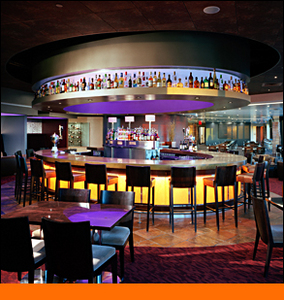
Diageo plc (LSE: DGE, NYSE: DEO) is the largest multinational beer, wine and spirits company in the world. The company is listed on the London Stock Exchange and has American Depositary Receipts listed on the New York Stock Exchange. The word Diageo was formed from the Latin dia (day) and the Greek geo (World), symbolising the use of the company"s brands every day, everywhere. Its head office is located in the City of Westminster in London. It is a constituent of the FTSE 100 Index.
Trivia:
- In December 2003, Diageo provoked controversy over its decision to change its Cardhu brand Scotch whisky from a single malt to a vatted malt (also known as a pure malt) whilst retaining the original name and bottle style. Diageo took this action because it did not have sufficient reserves to meet demand in the Spanish market, where Cardhu had been successful. After a meeting of producers, Diageo agreed to make changes.
- In 2006, the Cardhu brand quietly changed back to being a single malt.
- In July 2009, Diageo announced that, after nearly 200 years of association with the town of Kilmarnock, they would be closing the Johnnie Walker blending and bottling plant as part of restructuring to the business. This would make 700 workers unemployed and caused outrage from press, local people and politicians. A campaign against this decision was launched by the local SNP MSP Willie Coffey and Labour MP Des Browne. A petition was drawn up against the Diageo plans, which also involves the closure of the historic Port Dundas Grain Distillery in Glasgow.
- In February 2009 it was reported in the Guardian that the company had restructured itself so as to avoid paying tax in the U.K., despite much of its profits being generated in the U.K.
- Diageo is engaged in a tax scheme in the United States of America, commonly referred to as the "Rum Bailout", which will guarantee it USD$3 billion in revenues and profits.
- The National Puerto Rican Coalitionplans to run a series of ads in New York City and Puerto Rico urging a boycott of Diageo-owned alcoholic drinks to protest the giant British-owned corporation"s controversial production move of its Captain Morgan rum from Puerto Rico to the U.S. Virgin Islands.
from Wikipedia
The Owner: Aceo Ltd.
| Established: 1999 |
| Silent since: False |
| Address: Rodley |


Aceo Ltd has been supplying cask Scotch whisky and related distillery services to the Scotch whisky industry since 1999. It offers a complete cask to case service that covers everything from cask whisky sales to storage, blending, bottling, labelling and transportation.
Aceo has strong links with the major whisky producers and owns a very large stock of cask whisky which lies in distillery warehouses throughout Scotland. Our large stock holding means they are able to offer the full range of Scotch whisky including single malt, single grain and blended products. They can also supply a range of other spirits such as rum, gin and cognac.
They hold their customer's casks on their behalf and offer services including sampling, regauging and re-racking.
In 2013 Aceo Ltd acquired Murray McDavid independent bottlers.
Aceo has strong links with the major whisky producers and owns a very large stock of cask whisky which lies in distillery warehouses throughout Scotland. Our large stock holding means they are able to offer the full range of Scotch whisky including single malt, single grain and blended products. They can also supply a range of other spirits such as rum, gin and cognac.
They hold their customer's casks on their behalf and offer services including sampling, regauging and re-racking.
In 2013 Aceo Ltd acquired Murray McDavid independent bottlers.
from Aceo
